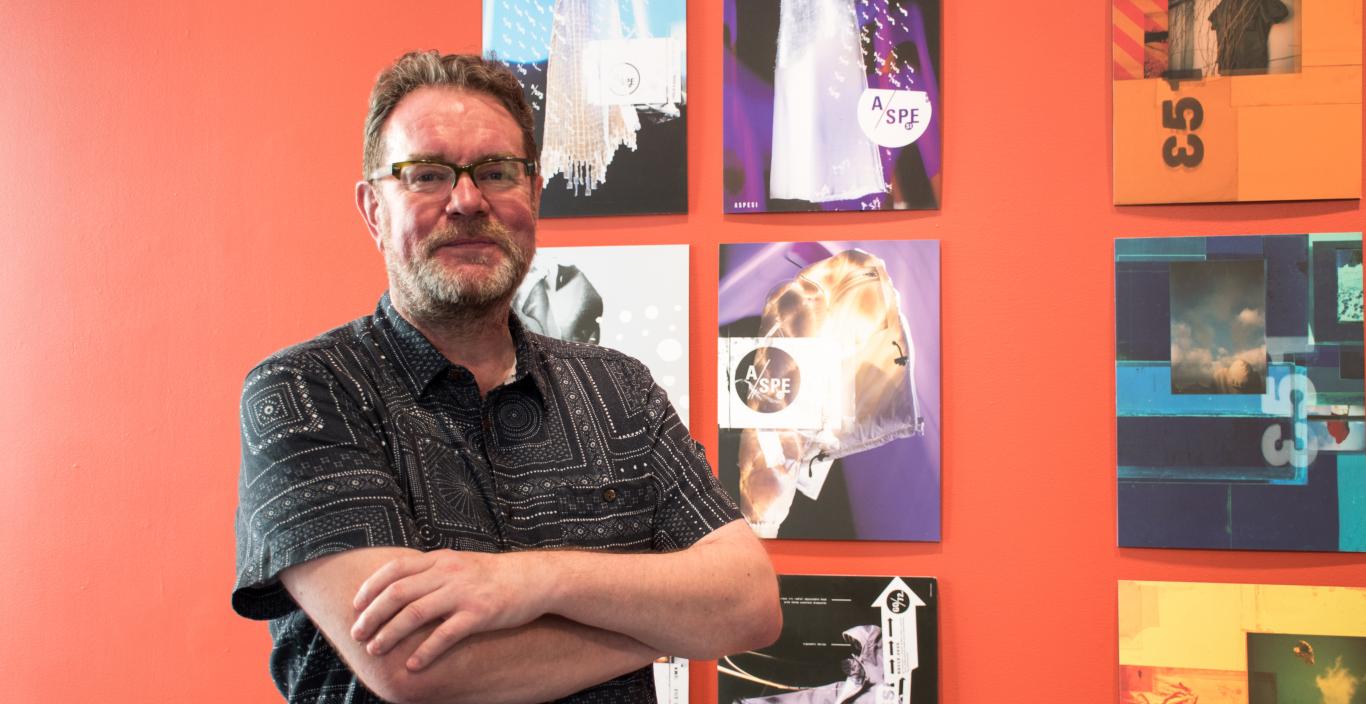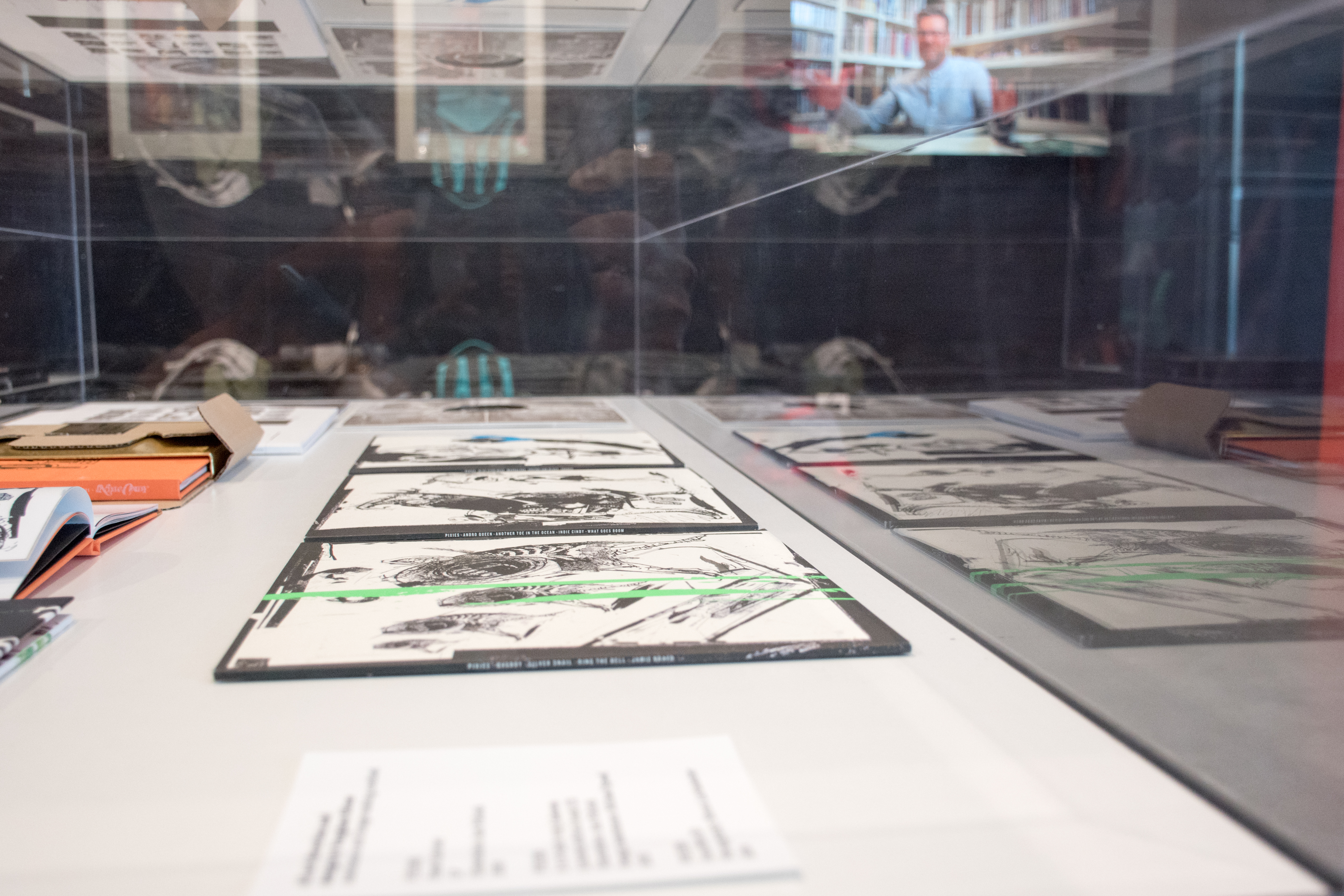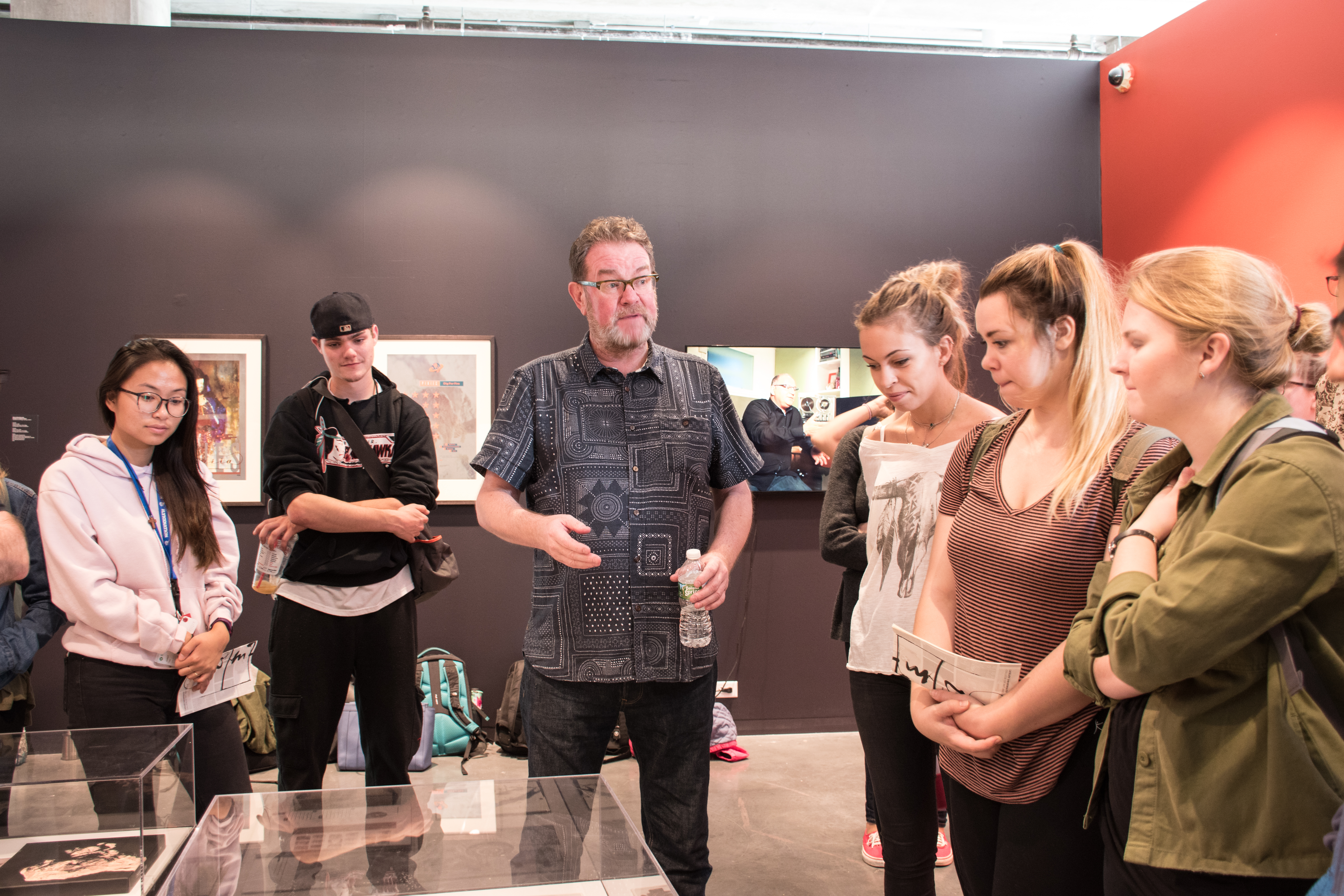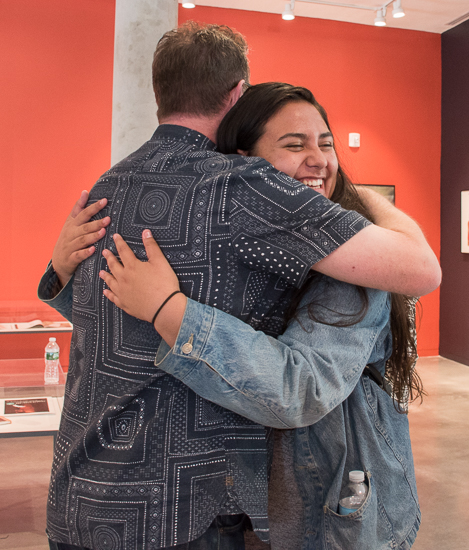Vaughan Oliver had no reputation when he became the graphic designer for UK record label 4AD, but then again neither did the label nor any of the artists it represented.
“That was so exciting, to work with a blank canvas,” says Oliver, whose exhibit “Walking Backwards” is now on display through Oct. 22 at the Lunder Arts Center.
The visionary’s “painterly” and haunting album sleeves — a mix of photography, typography and illustration — embodied and helped shape the image of alt-rockers the Pixies, the Cocteau Twins and Lush.
When Oliver signed on as the independent label’s first full-time hire — a bold move for a fledgling company — he was expected to help with some of the heavy lifting and odd jobs around the office. Instead, “I just clung to me desk,” says the British native. Hunkered down in his corner of the 4AD office, Oliver established the label’s brand with each new album cover.
“The key to the work is an air of mystery and ambiguity. I wanted to go against the grain, to go against the current,” Oliver said “With each of the bands, I wanted to give them an identity.”
Most of his work was created by hand, ink on paper, typography and illustrations overlapping photos, in the days before graphic design software was the norm.
“That’s where my heart lay. I’m a bit of an old fart,” said the self-deprecating Oliver.
But it’s hard to oversell Oliver’s influence. His designs helped define a musical movement and to push the line of what qualifies as graphic design. Oliver also gave a generation of designers permission to draw outside the lines through his work at 4AD and later through design studios 23 Envelope and V23.
Now more than 30 years later, and with corporate brands such as L’Oréal, Microsoft and Sony also among his clients, Oliver is influencing the next generation of designers as a mentor and teacher.
Self-proclaimed fangirl Kristina Lamour Sansone, associate dean for Academic Affairs in the College of Art and Design, called Oliver her “design hero” as she introduced him to a group of design majors.
“He was the main inspiration for me when I was in your shoes,” she said. “I’ve been inspired ever since.”
Oliver, a visiting professor at the University for the Creative Arts Epsom, took Lesley students through the posters, books and album covers on display in the Roberts Gallery. A proponent of the analog method who has learned to embraced digital design, Oliver imparted his design philosophy, words of wisdom and his enduring love for the form.
Stay ‘out there’
“Stay strong,” the 60-year-old Oliver told students. “It’s really hard not to get beaten down.”
That said, Oliver advised students to get a few years of experience in a studio before embarking on a freelance career. He also challenged them to take risks with clients while keeping a safe design in their back pocket.
“Do something that’s a bit out there,” he said. “Don’t show them the safe option or you’ve sold yourself up the bloody Swanee.”
For example, the sleeve for the Pixies’ “Come on Pilgrim” album features an image by photographer Simon Larbalestier, with whom Oliver collaborated on many covers. This composition features a man’s extremely hairy back framed with cursive typography.
“He was going bald, but he was hairy everywhere else, even on the back of his knee,” Oliver said of the unusual subject.
The day the band held the finished product in their hands they quit their jobs because they felt they had made it as a real band, said Oliver. Another plug for the analog, he said, “I don’t think a PDF would’ve done that.”
Risks ≠ shock value.
“It’s sort of the easiest thing in the world to do a provocative record sleeve,” Oliver said. The goal, however, is to make a connection with the design subject.
For the 4AD album covers as well as those he continues to work on with Brooklyn Bridge Records, Oliver collaborates with each artist, listens to their music, and if he still doesn’t have enough inspiration, attends a performance.
Oliver’s work often incorporates unexpected images while playing with opposites. “Something beautiful with something ugly. Something bright with something melancholic. Creative tensions,” he said.
Even with these commonalities, he always pushes himself creatively, avoiding any semblance of a template while chasing the “happy accidents” that come only when a designer is willing to deviate from his original concept.
“Leave yourself open to those tangential journeys,” he said.
Digital with a dose of analog
Senior graphic design major Lucy Nguyen found freedom in that message. As an artist who struggles with the brainstorming process, she appreciated the seemingly chaotic way Oliver described his design journey as well as his emphasis on old-school versus digital design.
“That’s a really wonderful thing to keep in mind for a person trying to learn graphic design and how to use it successfully,” Nguyen said. “I think a lot of successful work happens by accident.”
Oliver’s design style also resonated with Seana Aiolupotea, a fellow music lover and a sophomore in Lesley’s graphic design program.
“I’ve been trying to incorporate my love for music into design. He just really inspired me,” she said.
It was also a good reminder to take her work offline.
“In theory it seems tedious,” Aiolupotea said. “Once you do it, it’s a whole other experience, and it makes me feel more connected to my work.”
Fellow graphic design sophomore Kaitlyn Gernatt agreed.
“There’s just some stuff you can’t do on a screen,” she said. “You find out that when you just go do it, it looks better.”
Rather than discounting his traditional design methods, Oliver said students and faculty have embraced his message of going back to the basics of design and, in many ways, he is reintroducing them to the “tactile nature of the object.”
The students also give something back to Oliver, who said he had cabin fever working at home after his tenure at 4AD ended.
“I love it. I’m selfish,” said Oliver, who hugged several students at the end of his discussion. “It’s time in my life to give back and I really enjoy it.”



